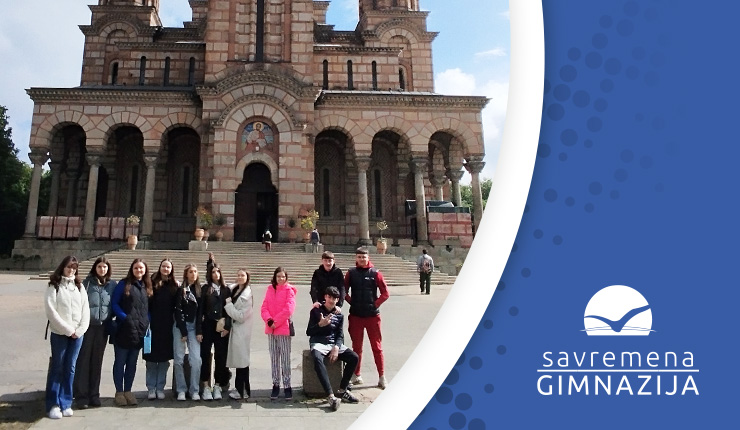
The Church of Saint Mark, the Apostle and Evangelist, in Belgrade is not only an architectural gem but also the guardian of many intriguing secrets and a rich history. Built from 1931 to 1940 in the Serbian-Byzantine style, this church stands as one of the most recognizable symbols of Belgrade.

Second-grade students had the opportunity to discover fascinating details about this building during one of their outdoor classes led by their Latin language teacher, Natalija Stanković. Its history dates back deep into the past, built on the foundations of the previous cemetery chapel from 1835, which was located on the site of the old cemetery in Tašmajdan.
In addition to its architectural beauty, the Church of Saint Mark stands out for its unique characteristics. It has three altars, each dedicated to different saints and events. Moreover, it can accommodate an impressive two thousand people during liturgy, and it houses the largest mosaic of the Virgin Mary in the world: "Presveta Bogorodica šira od nebesa."
On the northern side of the church, visitors can discover a white marble tomb where the earthly remains of Patriarch German Đorić rest, adding depth to the spiritual significance of this place.
Architectural beauty and cultural heritage: A deep dive into the Church of Saint Mark
One of the most significant aspects of the church is the copper sarcophagus that holds the earthly remains of Emperor Dušan, transferred from his endowment, the Monastery of the Holy Archangels near Prizren. Additionally, in the church crypt lie the last members of the Obrenović dynasty – King Aleksandar Obrenović and his wife, Queen Draga Mašin.
The church's baptistery is home to a significant collection of Orthodox icons and writings from the eighteenth and nineteenth centuries, adding cultural importance to this place.
Throughout its tumultuous history, the church has become not only a religious but also a political symbol. Its location on Tašmajdan, where in 1830 the Sultan's decree recognizing Serbia's autonomy within the Ottoman Empire was read, further emphasizes its symbolic importance in Serbian history.
Beneath the church itself are caves dating between six and eight million years old, further enriching the history of this fascinating place.
The Church of Saint Mark in Belgrade, once the largest Orthodox church in pre-war Yugoslavia, remains an endless source of spirituality, culture, and history, attracting visitors to explore its secrets and charms that stretch through the centuries.

















